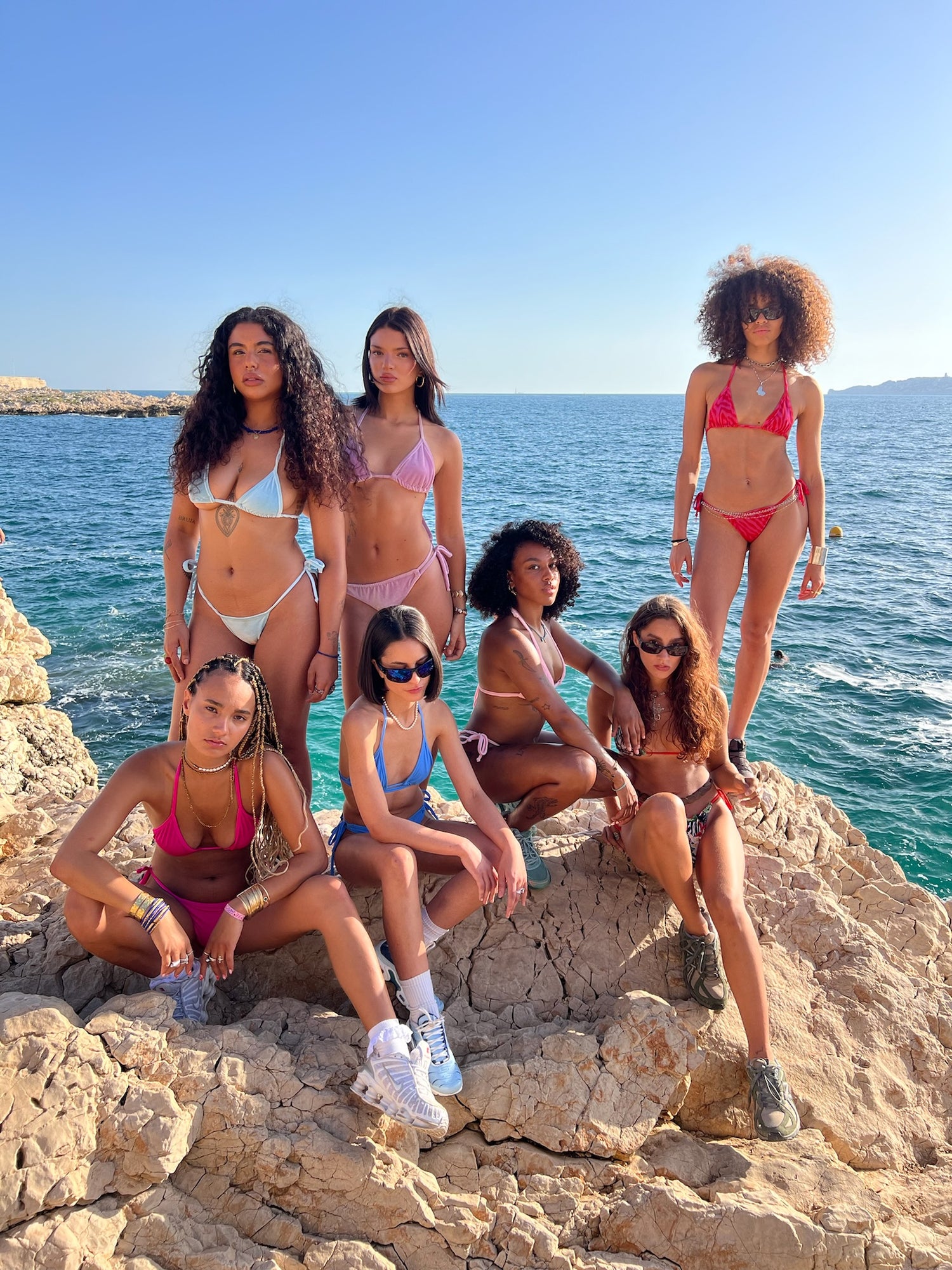THE CULT OF TANNING
While in France we like to change the shape of our swimsuit or move it so as not to mark in the same place and to reduce tan lines, Brazilian women, on the contrary, are crazy about them. You may not know it but tan lines are the height of beauty in Brazil, because they prove that you have a good tan. So Brazilian piris love to show off their very white skin marks that cut out beautiful dark skin.
So much so that Erika Do Bronze's salon has been creating a buzz for several years by offering swimsuits made with "chatterton" tape in her salon so that your swimsuit doesn't move and leaves very marked marks...the cream of the crop.

TAN WITH PROTECTION
Speaking of cream, some French Piris are also very fond of sunbathing with oil at noon sharp... But you can tan even with sunscreen! Sunscreen only protects against bad UV rays that cause premature aging of the skin and in the worst cases very dangerous cancers. Every year, there are still 80,000 cases of skin cancer diagnosed, 3 times more than 20 years ago.
So for our health, let's avoid intensive tanning sessions, especially between 12 p.m. and 4 p.m. But hey, it's complicated when you spend an afternoon at the beach, in this case, let's have the good reflex to put on sunscreen. We tan just as much with sunscreen that stops bad UV rays and also moisturizes our skin, provided we remember to apply it every two hours and after each swim if the sunscreen is not water-resistant.
FOR DARK SKIN
So I see you coming, the hotties, the dark skinned, the dark skinned "we don't need it" - well yes. Explanations.
Black skin should opt for a sun index between 15 and 25, dark skin for an index 30 and light skin should count on an index 50 or 50+. To protect yourself but also for an even tan and especially to preserve the youthfulness of your skin, sunscreen is essential.
Of course, you are better protected by a high level of melanin which ensures a better natural barrier to UV rays, but not 100%. Especially since some darker skins (or not) tend to mark or make pigment spots more easily, at which point an SPF of 50 is necessary. To avoid the "mask" effect or a gray complexion of white creams, you can favor non-whitening, tinted or transparent textures, with rapid penetration.
NATURE, CORAL, ORGANIC, ENDOCRYNIAL DISRUPTORS
So the difference between traditional sun creams and organic sun creams is that the former use a synthetic filter, derived from petrochemicals, some of which are suspected of being endocrine disruptors.
For organic sunscreen, the filters are minerals and are therefore natural. They are micro-pigments such as titanium dioxide or zinc oxide which instead of stopping reflect the sun's rays on the skin to stop UV rays.
Coral suffering, asphyxiated plankton, disappearing fish… when you go swimming, sunscreen remains in the water. Faced with this threat, many brands offer environmentally friendly sunscreens or suggest replanting coral at the same time. Even though some studies have cast doubt on sunscreen being the only culprit for coral decline, but rather on the fact that pollution and global warming are the real culprits. This is more problematic in the stagnant waters of the Mediterranean than on the tidal coasts of Brittany.
So, it's up to each of us to choose the conditions we prefer to select our sunscreen and I'm giving you here as suggestions some examples of products gleaned here and there on the internet that take into account one or more of these criteria (it's up to you to do more research on your products, this is in no way advertising because I haven't directly tested them). But one thing is sure, we must take care of our beautiful skin and protect it from the sun.
*Personally, I opted for the Respire cream this year:















